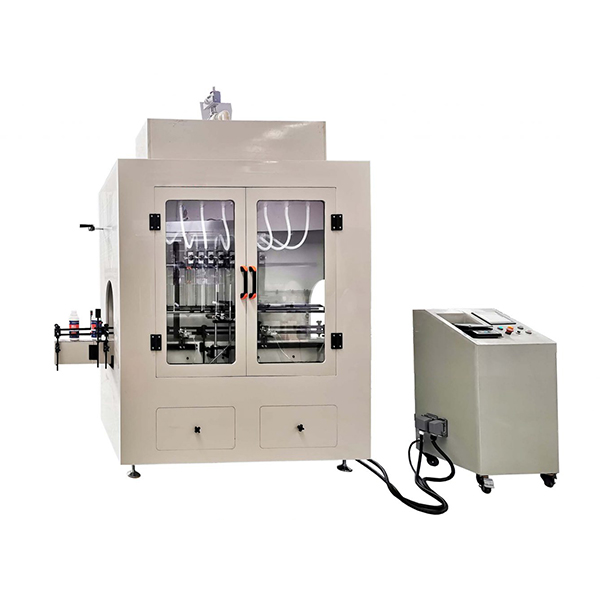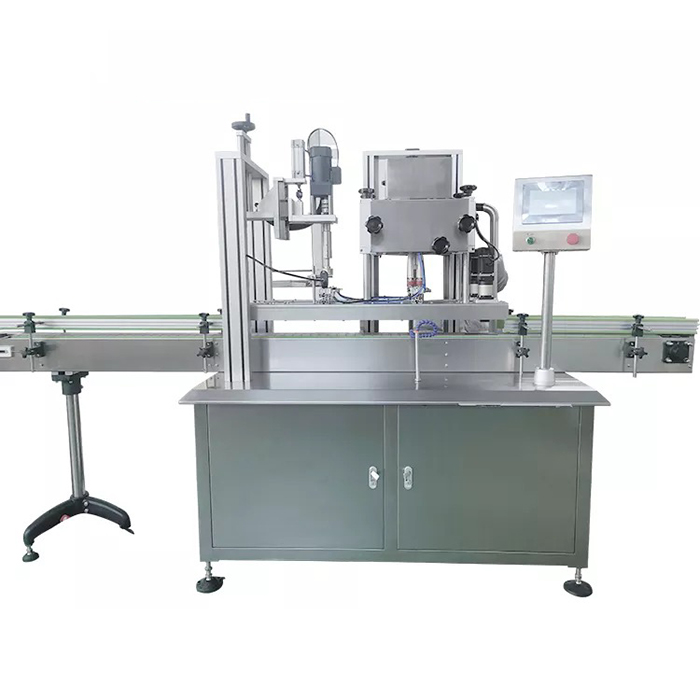
Summary
An acid is a molecule or ion capable of either donating a proton. Common aqueous acids include hydrochloric acid, acetic acid, sulfuric acid, and citric acid. As these examples show, acids can be solutions or pure substances. Strong acids and some concentrated weak acids are corrosive, but there are exceptions such as carboranes and boric acid.
When you are bottling acid there are several types of filling machines you may choose.
VKPAK designs and builds filling machines and packaging equipment for acid.
Our acid filling machines are designed to meet the changing needs of the chemical industry. We manufacture the ideal machinery to handle your acid filling needs and meet your production goals.
View VideoMost acids encountered in everyday life are aqueous solutions, Acids exist universally in our life. There are both numerous kinds of natural acid compounds with biological functions and massive synthesized acids which are used in many ways.[From Wiki]
Second, the power conveyor system will transfer containers from one machine to another, often running from one end of a packaging system to the next. Stainless steel conveyor systems can become the victim of a splash or spill as well, as they will be holding the bottles or other containers in place during the filling process. In addition, the power conveyor system, while running, could spread the acids across the entire line or conveyor, inflicting more damage on the machine. Using an HDPE material for conveyors when dealing with an acid or highly corrosive chemical can also protect the power conveyor system from premature wear and tear and again prolong the life of the conveyors themselves.
As described by Wikipedia strong acids and some concentrated weak acids are corrosive, but there are exceptions such as carboranes and boric acid. For non-corrosive acids, we can also use conventional gravity, overflow or piston filling machines.
For acidic liquid containers over 5L, such as the common 200 liter drum, VKPAK recommends the use of a weighing and filling machine (also for corrosion protection)
HDPE (High-Density Polyethylene) is resistant to many different solvents and chemicals and therefore offers corrosion protection in applications where certain chemicals or other products may damage a machine made from metal!
The filling machine also stands apart from other packaging equipment, such as a rinsing or capping machine, in that it obviously interacts with the product more than the other packaging machines. The liquid filler must transfer the product through a pathway and into the bottle. For this reason, filling equipment is especially vulnerable to wear and tear caused by the product being packaged. Not only will the product be in contact with certain parts of the filling machine, but drips and accidental spills are more likely to occur at the filling machine than on any other location on the packaging line.
The fully automated acid filling machines include all of the features and options of the stainless steel fillers, but are simply built using the plastic material. Acid filling equipment can be controlled with a PLC and easy to use touchscreen operator interface. Different filling principles, such as gravity or overflow, can be incorporated into the machine, which can use anywhere from two to sixteen fill heads to reach the necessary demands of production. Different indexing types can be used for the acid filling machines, including pin indexing, starwheel indexing or even screw indexing.
Of course, automatic packaging machinery will also require automatic conveyors to move the containers through the various packaging stages. Most automatic acid filling machines will also include an HDPE power conveyor for additional protection against packaging line breakdown or premature wear. The HDPE conveyor may also run the entire length of the packaging system to protect against spills or drips.
Other packaging equipment for acid may still be manufactured using stainless steel, as the interaction will not include contact with the product. For extremely harsh products or environments, other HDPE equipment, venting options or custom solutions can be provided. If you are packaging a product that simply does not interact well with metals, do not give up on efficiency!



















